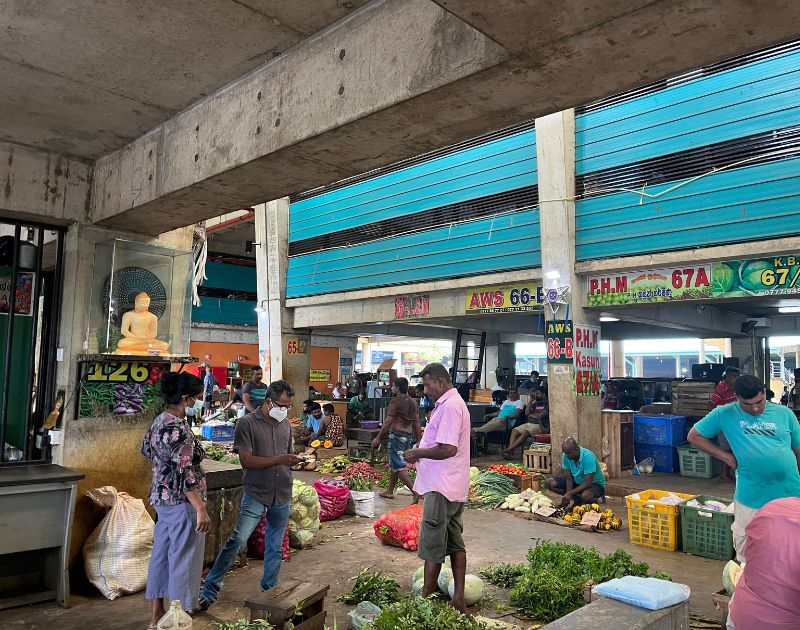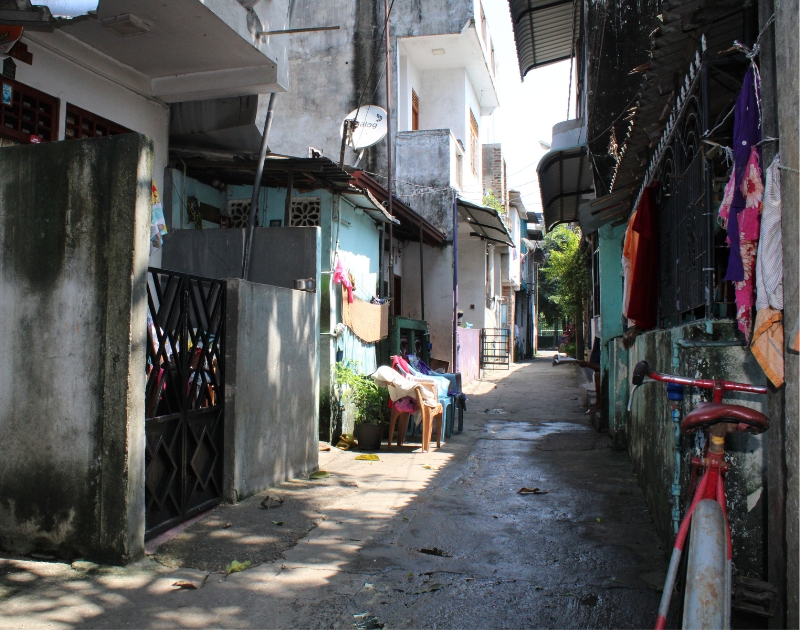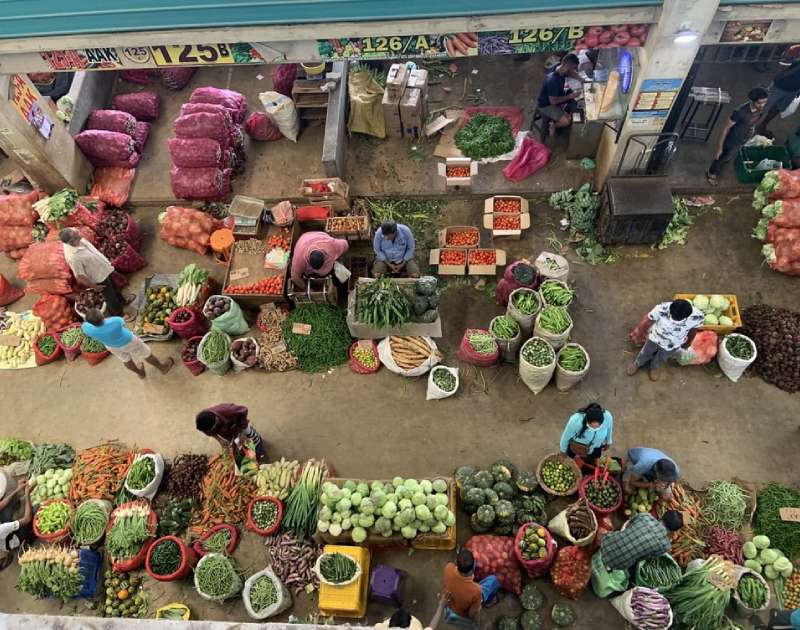
- Home
- Knowledge Insights
- Hostile Architecture in Colombo
Hostile architecture is unpleasant or exclusionary architecture or defensive urban design, that uses elements of the built environment to guide or restrict behaviour, particularly intending to stop people from doing something. It can be either intentional or unintentional, but the negative outcome remains the same – it excludes certain people from using public space for their convenience.
This type of design is usually targeted at marginalised communities such as the homeless. For example: these concrete spikes under a road bridge in Guangzhou, China make it impossible for anyone to shelter there. Benches with railings in the middle or a lack of backrests stop people from leaning back or lying down. A thin bus stop bench that doesn’t allow someone to sit comfortably or lie down, would also negatively affect other groups – like the elderly that take public transport. These are explicit forms of hostile architecture. More subtle, or implicit, forms can be a gap in an awning that allows rain to go through and onto people standing underneath. It can be a pavement that is slightly uneven to make wheelchair access difficult. This doesn’t just target the homeless, but affects other groups like the disabled, or young couples and groups of friends that want to spend time together.
Hostile architecture essentially restricts and polices behaviour of those who rely on public space more than others, such as the young, those working in the informal sector and the urban poor. Urban planners sometimes do this on purpose to make cities less comfortable, or to make invisible those they deem undesirable or unworthy of existing in public space. This has the effect of relocating the population through urban design, forcing them to leave to find other spaces to spend time, to sleep or rest.
The Problem
This type of design goes against the purpose of public space, which is defined as a place where people can affirm their shared rights to a city. People are meant to go to these shared spaces to work, play and rest. Hostile architecture makes public space exclusive instead of inclusive – it bars or restricts certain groups in the community from using them. They are meant to be accessible and to encourage community building, but hostile architecture within them pushes communities further apart.
Public spaces have also been becoming increasingly privatised . Some areas seem public, but are actually privately owned. These “pseudo public spaces” hoodwink urban dwellers into entering them freely and relaxing, only to be told they cannot do that by security or the owners of the space. Sometimes these places don’t even offer seating. Users have noted that they don’t feel like public spaces at all, and that it seems like they try to keep people from using them. There is hostility in these interactions, and it is a blatant reduction of the amount of space people can exist for free. Ultimately, it reduces the liveability of a city.
One might ask, should spaces allow for people to sleep on benches or public seating, limiting the use for others? This is a valid question, but we need to consider the 24/7 use of these public infrastructure and the access to all citizens. If lying down is restricted through design, these infrastructures become empty spaces with no or very limited use for certain times of the day. Furthermore, with heat stress increasing in Colombo, we need infrastructures like benches to be conducive to lying down whether it is a pedestrian or outdoor worker needing it. Ultimately, it is about the public deciding the various uses of public infrastructure, not a designer or policy maker pre-determining or limiting it’s use.
Hostile architecture obviously doesn’t solve the homeless problem. Instead, it pushes people away from city centers and resources by rendering public spaces less inclusive and accessible.They will remain homeless regardless, with an added discomfort of having less access to shelters and other resources in the throngs of a city. There needs to be a focus by policymakers on the underlying causes of homelessness instead of moving them away from populated areas.
We should also consider the idea of “morality” in public spaces. There have been incidents in Colombo itself where the police have arrested or harassed young couples that visit public spaces. This is usually carried out under the charge of “gross indecency”, even though it has been reported that all the couples did was holding hands and kissing. In 2010, over 300 people were rounded up for “indecent behavior”, which was seen as “westernised”. It brings to attention Sri Lanka’s conservative culture and backwards vagrant laws, which give the police backing to make wrongful arrests like this. Designs of infrastructure in Sri Lanka’s public spaces – for example a bench where two people cannot sit close together because of a hand rail or separated seating (see our map below) is an extension of this moral policing. If public spaces are not safe for young people to socialise with each other, these are hostile spaces that restrict the behaviour of patrons.
Personal Reflections
Sri Lanka has been encouraging tourism to Colombo in recent years, which I think is a reason for more hostile architectural choices. It has the effect of making some communities invisible to those that desire to see the beauty of the country by forcing the “undesirable” away from metropolitan areas. This is evident from the measures taken when Sri Lanka hosted CHOGM in 2013- making Sri Lankans refer to it as “Show-Gm” instead. Some criticised efforts to make the city look like a newer, cleaner, more beautiful and less authentic version of itself. Green screens were erected along the expressway to block the sight of low income settlements. No thought was given to how this would affect the livelihoods and comfort of those that lived in them. Viharamahadevi Park was spruced up, and new bus shelters were erected on routes taken by visitors, whereas bus stops outside the city continued to fall apart. Moreover, beggars were removed from the streets and forcibly relocated to Ridiyagama, which is outside of the city. This was all to portray Colombo as a clean, visually appealing garden city to the arriving dignitaries from other nations. In 2024, the authority managing the Galle Face Green, the Sri Lanka Port Management & Consultancy Services (Pvt.) Ltd. (SLPMCS), a government-owned company under the Sri Lanka Ports Authority (SLPA) removed the iconic isso vadai carts from the sea front as they felt the carts were “ugly”, “dirty” and “broken” and that they discouraged tourists.
As Sri Lanka’s touristification – the process where a place transforms to cater to tourists- increases, the ideals about world-class aesthetics and capitalism will continue to take over urban spaces. The recent completion of projects such as the ITC Ratnadipa and the City of Dreams Colombo has already started transforming the area around Galle Face to add to Sri Lanka’s growing tourism sector. With this comes increasing levels of “corporate hygiene”: physical cleanliness and convenience to boost efficiency. The implementation of hostile architecture to suit these values will no doubt continue unless urban planners and architects in Colombo take accessibility into account when designing their projects. A “slum free city” is not the same as a “poverty free city” and policies need to address the latter and not the former. Otherwise, Colombo urban life will witness a decrease in inclusive public spaces due to a change in priorities: from citizen to visitor.
This article is available as a StoryMap with photos and an interactive map of Colombo where you can see spaces where we have spotted hostile architecture in the city.
Kimaya Balendra was an intern at Colombo Urban Lab from June – August 2025


